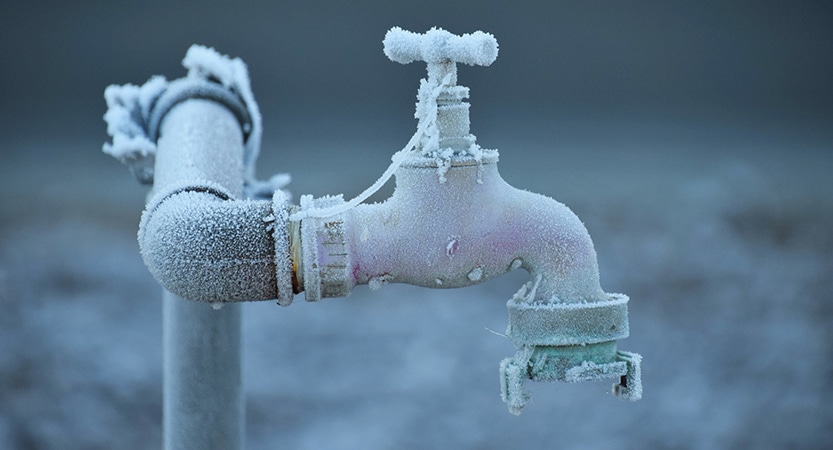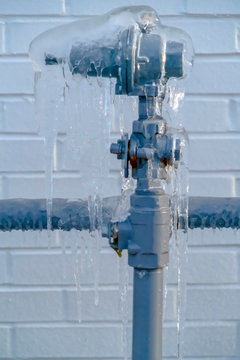The content below in relation to Prevent Frozen Pipes is seriously insightful. Don't miss it.

Cold weather can damage your plumbing, specifically by freezing pipelines. Here's how to stop it from taking place and what to do if it does.
Introduction
As temperatures decline, the danger of icy pipelines increases, possibly resulting in expensive fixings and water damage. Comprehending just how to stop frozen pipes is vital for home owners in cold climates.
Prevention Tips
Protecting prone pipelines
Cover pipelines in insulation sleeves or use heat tape to safeguard them from freezing temperatures. Focus on pipes in unheated or outside areas of the home.
Heating techniques
Keep indoor rooms properly warmed, specifically locations with pipes. Open cabinet doors to allow cozy air to flow around pipes under sinks.
How to identify icy pipes
Try to find reduced water circulation from taps, uncommon smells or noises from pipes, and noticeable frost on revealed pipelines.
Long-Term Solutions
Structural modifications
Take into consideration rerouting pipelines away from outside walls or unheated locations. Add extra insulation to attic rooms, basements, and crawl spaces.
Upgrading insulation
Buy high-grade insulation for pipes, attic rooms, and walls. Appropriate insulation aids preserve regular temperatures and minimizes the risk of frozen pipelines.
Shielding Outdoor Pipes
Yard hoses and outdoor taps
Separate and drain pipes garden hose pipes before winter months. Install frost-proof spigots or cover outdoor faucets with protected caps.
Recognizing Icy Pipelines
What creates pipelines to ice up?
Pipelines ice up when revealed to temperature levels listed below 32 ° F (0 ° C) for expanded durations. As water inside the pipelines ices up, it broadens, taxing the pipe walls and potentially causing them to break.
Threats and problems
Frozen pipes can lead to water supply disruptions, residential or commercial property damages, and pricey repair services. Burst pipelines can flooding homes and cause extensive architectural damage.
Indicators of Frozen Water Lines
Identifying icy pipes early can stop them from rupturing.
What to Do If Your Pipelines Freeze
Immediate actions to take
If you suspect icy pipelines, maintain taps available to ease pressure as the ice thaws. Use a hairdryer or towels soaked in hot water to thaw pipes slowly.
Final thought
Preventing icy pipelines calls for positive steps and fast actions. By understanding the reasons, signs, and safety nets, property owners can protect their plumbing throughout cold weather.
5 Ways to Prevent Frozen Pipes
Drain Outdoor Faucets and Disconnect Hoses
First, close the shut-off valve that controls the flow of water in the pipe to your outdoor faucet. Then, head outside to disconnect and drain your hose and open the outdoor faucet to allow the water to completely drain out of the line. Turn off the faucet when done. Finally, head back to the shut-off valve and drain the remaining water inside the pipe into a bucket or container. Additionally, if you have a home irrigation system, you should consider hiring an expert to clear the system of water each year.
Insulate Pipes
One of the best and most cost-effective methods for preventing frozen water pipes is to wrap your pipes with insulation. This is especially important for areas in your home that aren’t exposed to heat, such as an attic. We suggest using foam sleeves, which can typically be found at your local hardware store.
Keep Heat Running at 65
Your pipes are located inside your walls, and the temperature there is much colder than the rest of the house. To prevent your pipes from freezing, The Insurance Information Institute suggests that you keep your home heated to at least 65 degrees, even when traveling. You may want to invest in smart devices that can keep an eye on the temperature in your home while you’re away.
Leave Water Dripping
Moving water — even a small trickle — can prevent ice from forming inside your pipes. When freezing temps are imminent, start a drip of water from all faucets that serve exposed pipes. Leaving a few faucets running will also help relieve pressure inside the pipes and help prevent a rupture if the water inside freezes.
Open Cupboard Doors
Warm your kitchen and bathroom pipes by opening cupboards and vanities. You should also leave your interior doors ajar to help warm air circulate evenly throughout your home.

As a keen reader about How To Avoid Freezing Pipes, I thought sharing that excerpt was really useful. You should take the opportunity to distribute this page if you appreciated it. I truly appreciate reading our article about How to prepare your home plumbing for winter weather.
Get A Quote